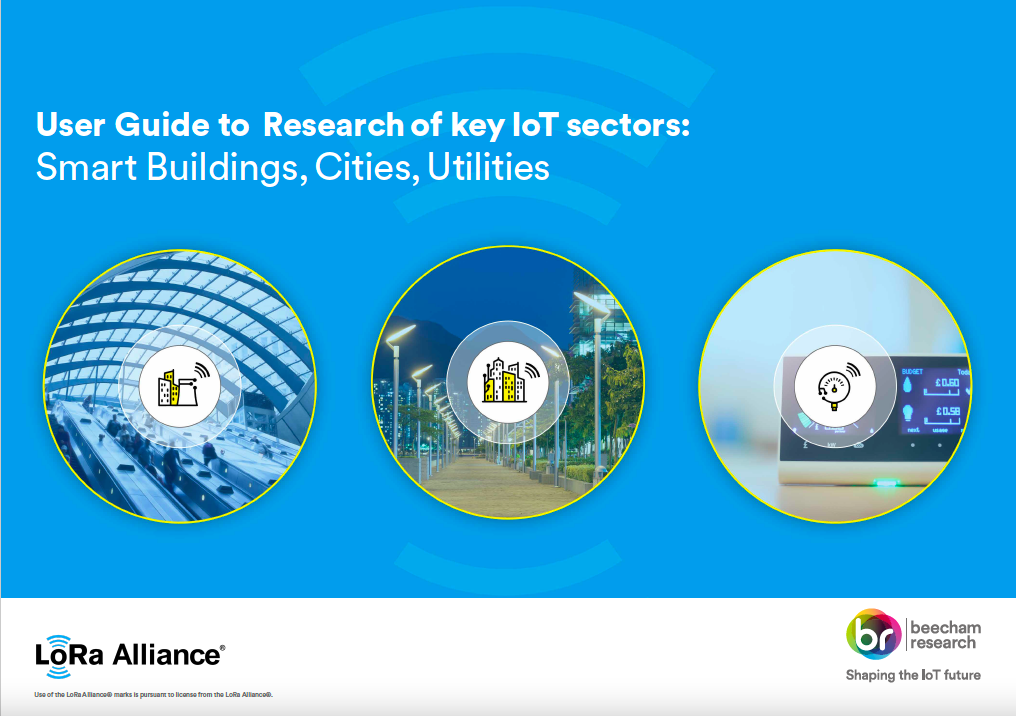Understanding the Potential for LoRaWAN in Smart Buildings, Smart Cities, and Utilities

The IoT landscape is continuously evolving, driven by innovative technologies that connect the world around us. In a recent report commissioned by the LoRa Alliance, Beecham Research explored the significance of LoRaWAN in three key areas: smart cities, smart buildings, and utilities. By surveying 292 respondents across these various sectors, Beecham found that there is a growing awareness and adoption of LoRaWAN, positioning it as a game-changer in the IoT ecosystem.
According to the “Primary Research of Key IoT Sectors: Smart Building, Smart Cities and Utilities” report, LoRaWAN has rapidly gained ground in all sectors despite its relative youth compared to cellular technology. In fact, when asked “Which of the following do you consider the most important connectivity types for low-rate data applications?” respondents across smart buildings, cities and gas and water utilities ranked LoRaWAN as follows:
- Smart Buildings: 56% very important, 36% fairly important
- Smart Cities: 61% very important, 32% fairly important
- Utilities: 61% very important, 29% fairly important
- Gas: 69% very important, 24% fairly important
- Water: 68% very important, 28% fairly important
These numbers reflect that buyers are aware of low-power wide-area connectivity options and are ready to embrace LoRaWAN to power their IoT solutions. Based on these survey results, we expect to see continued growth of this robust, secure long range, low-power wireless communication protocol.
Navigating the Buyer’s Journey
Beecham found that in all sectors, specialist solution providers and system integrators play a pivotal role in the buying process for IoT solutions. With their deep sector-specific expertise and technical references, these professionals hold considerable influence. Notably, they can provide insights into the connectivity options available, making them trusted advisors for full IoT solution details. Additionally, buyer respondents turned to the Internet for information to support their process, participating in relevant sector-specific webinars and accessing comprehensive, sector-specific relevant reports.
That said, it is important to note that each sector had a different set of decision makers, contributors on solution design, and challenges. In the realm of smart buildings, key players such as building owners, solution providers, and facilities management were identified as crucial to the buying process. While overall solution criteria may take precedence over connectivity, there is a growing interest in LoRaWAN as a preferred connectivity option due to its effectiveness and simplicity. Moreover, the post-pandemic world has emphasized the importance of energy management, air quality monitoring, and sustainability initiatives to create safe and efficient work environments. The biggest reported challenges for this sector are cost and budget constraints, interoperability with existing systems, data security and privacy risks, which LoRaWAN can help overcome.
Though the utility sector faces similar challenges, it has experienced a strong push to focus on smart metering driven by federal infrastructure funding and consumer usage and billing data requirements. Standards play a vital role in maximizing vendor choice and competitive costs which is why utility business units often partner with specialist solution providers. Here, LoRaWAN’s advantages shine, offering network deployment flexibility, long device (meter) battery life, and cost-effectiveness. A robust LoRaWAN ecosystem ensures interoperability, fostering choice and innovation for utilities seeking efficient connectivity solutions.
Because of unique government structure and many competing priorities, the Beecham Research report found a lack of an established procurement route in smart cities. The buying process for smart cities often includes an infrastructure development team partnering with a specialist solution provider, while solution design is led by a Director of Smart Initiatives and a CTO. The leading use cases LoRaWAN networks and devices are being considered for include water management, environmental sensing, and street lighting. Complex policies and procedure, budget constraints, and coordination across multiple departments impact all city technology investment and deployments, including LoRaWAN.
The report did note there is a shift toward centralized decision-making by city boards, shaping the prioritization of IoT applications in the urban landscape, but municipal changes can take time. There is, however, an opportunity for LoRaWAN solution providers to focus on adoption in smaller cities and towns, as well as focus on establishing more smart buildings that facilitate expansion of LoRaWAN networks through distributed gateways across various buildings.
In all, the Research report provides compelling evidence of growing interest and adoption of LoRaWAN based on the value delivered across applications for smart buildings, cities, and utilities. As more industries embrace the power of digital transformation, LoRaWAN’s role becomes increasingly prominent. Continued research, innovation, and collaboration are key to unlocking the full potential of this technology in shaping a connected and efficient future.
Contact Senet for additional report details.
